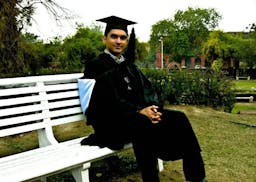Girls Education Challenges and Barriers Why are 13.1 Million Girls out of school in Pakistan?
May 28, 2019
Story



By Umair Asif Global Youth Ambassador Pakistan
School Education of Girls is suffering inPakistan. According to a survey, Pakistan ranked number two in the race of “Out of School Girls” [Pakistan Today, 29 November 2016]. The out of school girls have different challenges and barriers which are
· Missing Facilities
· Bad Transport Facilities
· Poverty
· Traditional Barriers and Wrong Religious perceptions
· Gender Discrimination
· Early Age Marriages
· Security, Lack of Safe environment and physical disabilities
According to a research 33.6% girls not attend school due to the will of parents. Girl’s enrollment ratio is 54% at primary level which falls to 21% at the middle level and 13% at secondary level due to drop out. According to a survey, 29% girls dropped out at middle level as they have to help in work at home [25 Million Broken Promises, alifailaan.pk ].
Every single girl out of school is a challenge to implementation of article 25-A Right to education act which passed in 2013 at the national level in Pakistan. Schools have many missing facilities such as no electricity and toilets, shortage of teachers, lack of rooms, dangerous building conditions and lack of furniture which causes drop out. Girls lost interest due to poor conditions of schools and education [25 Million Broken Promises, alifailaan.pk ].
In mostly rural areas, schools are far away from home, and there are no transport facilities even in the major cities. It makes getting an education more challenging for girls. In long travels, security of girls is a concern for parents. Particularly in rural areas harassment and rape is increasing day by day. It is a threat to girl’s education, and concerned persons need to improve law and order with the implementation of harassment law 509.
Poverty is the toughest challenge for girls to join the school and stay there [25 Million Broken Promises, alifailaan.pk ]. The government started some programs to provide school girls stipends. It helped girls at some extent level, as stipend amount was useful and limited. Another solution to deal with poverty is entrepreneurship skills, vocational and part time skill based training which need to extend at a massive level.
Wrong cultural traditions and false religious perceptions are formidable barriers in girl’s education. Cultural and societal traditions also initiate gender discrimination which gives right of education to a boy and ignorance to a girl. A massive continuous awareness required to cure ill minded people and remove wrong perceptions.
Early child marriages are a global issue, and due to the huge population, it is a big problem in Pakistan. It is a lifetime barrier for girls particularly in rural areas. According to UNICEF 37 per cent of Pakistani women get married before reaching the age of 18 years. Civil society organizations and parliamentarians are making significant efforts to change minimum marriage age for girls to 18 years which is now 16 years but not succeeded yet. Overall, some progress was raised by the committee as fine and punishment increased. It also leads to early pregnancies which can cause the death of girls.
“United Nations celebrate International Girl Child Day every year on 11 October". “On December 19, 2011, the United Nations General Assembly adopted Resolution 66/170 to declare 11 October as the International Day of the Girl Child, to recognize girls’ rights and the unique challenges girls face around the world. This year, as the international community assesses progress under the Millennium Development Goals (MDGs) since their implementation in 2000 and sets goals to be achieved by 2030, girls born at the turn of the millennium have reached adolescence, and the generation of girls born this year will be adolescents in 2030. As we reflect on the achievements of the past 15 years and plan sustainable development goals for the next 15, it is an opportune time to consider the importance of social, economic, and political investment in the power of adolescent girls as fundamental to breaking the intergenerational transmission of poverty, violence, exclusion and discrimination and to achieving equitable and sustainable development outcomes”. [www.un.org/en/events/girlchild/]
It is not only associated with rural areas. The metropolitan city Lahore is also suffering from girl’s education. Approximately 1, 50,000 girls are out of school at Lahore district, and the biggest challenge is the absence of quality education [Education Department Lahore]. According to a learning test of Lahore 42% girls cannot read an Urdu sentence, 37% girls cannot read English words and 47% girls cannot solve a two-digit division question of Math [ASER Report].
Two years passed to Right to education act 2014 Punjab but till now rules of business not formed. Government acts showgirls education as a non-priority issue. A discussion started on gender equality and equity, but nothing is achieved on it yet. It is need of time to make budget gender-based and increase the level of quality to reduce drop out at the middle level. Teacher training and proper planning are required to meet sustainable development goals. Punjab government should remove the ban from the formation of new public schools. Prime Minister of Pakistan has promised to increase education spending to 4% of GDP till 2018 but not shared proper plan and a yearly increase of the schooleducation budget percentage of GDP [Express Tribune 29 March 2014].
The truth is that we need to change our minds to change conditions for girl’s education.




